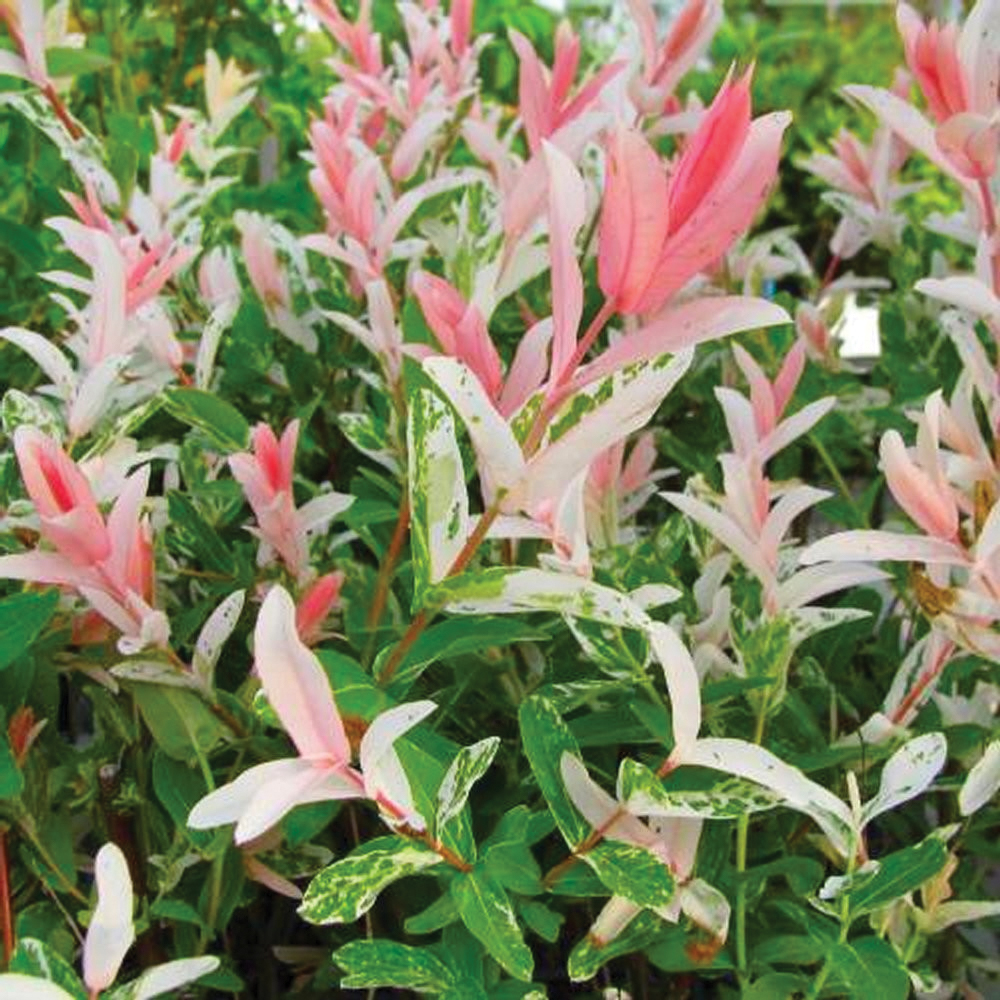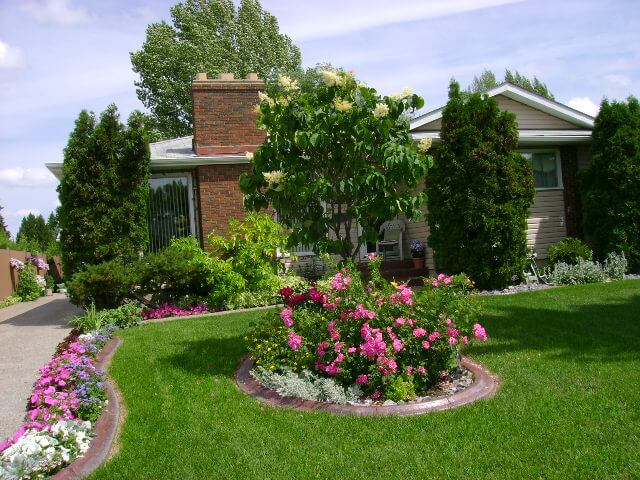| The tree is native to the northern hemisphere. Forty species are native to Alberta. Pussy willows provide early sustenance to pollen loving bees, but the pussies on the willow can also be mashed and eaten if you happen to be lost in the wilderness sometime in the future. By the way, young leaves contain about seven times more vitamin C than an orange.
The silver willow, Salix alba ‘Sericea’, is a beautiful silver-leafed tree growing 50 feet tall and wide. It is hardy to Zone 2. It is multi-stemmed and grows quickly. Ideal for shelterbelts or large spaces, it will live at least 80 years. It can be invasive, so be sure you have the space to accommodate this lovely tree.
There is a small shrub native to Alberta called wolf willow, but it is not a willow at all. This is Elaeagnus commutate, a pretty little shrub also known as silverberry for its shining white fruit. It would be more popular in landscapes for its colour if it didn’t sucker. Now there is a hybrid that stays in its place. It is a cross between a Russian olive and the wolf willow.
There is also a shrub called coyote willow, Salix exigua, which reaches up to 23 feet. Its leaves are also grey-green, at least when they are young. It is can be found growing wild along streams and lakes.
We all love the pussy willow, Salix discolor, the North American variety that produces the velvety soft, white furry pussy toes. You need a male plant and a female plant to get the flowers. Look for the female which stays white. The male flowers turn yellow with pollen when mature. Be careful not to buy the European variety or goat willow, Salix caprea; the female flowers turn green at maturity while the males are covered with yellow pollen.
The peachleaf willow, Salix amygdaloides, is very common in Alberta. It is second only to the cottonwood for its size on the prairies, although it grows from Quebec to western British Columbia. It will grow to 66 feet tall and often has a single trunk. The leaves are yellowish green with a pale underside. This grows only from seeds and it has a limited life span of 25 to 50 years.
Among the prettiest is the shrub, Salix integra ‘Hakuro Nishiki’, also known as dappled willow, a Japanese variety that has variegated leaves of white and cream, with green freckles. New growth is pink. This shrub grows four to six feet tall in fertile, well-drained soil and prefers sun to get the best colour, although it will do better with a bit of afternoon shade in very hot climates.
Weeping willows are the tree of romance, but they need a lot of water. The variety to grow here is ‘Prairie Cascade.
Willow responds well to pollarding, sending out long straight branches (withies) and these twigs have been used in a myriad of ways, including to feed cattle, for basket making, home building (wattle huts) and even boat making (Welsh coracles) in the past. Willow is also being used in Australia as bio-fuel.
Willow was the first “aspirin” thanks to the properties of its salicin. It was only displaced back in 1897, when Felix Hoffman discovered how to synthesize the acetylsalicylic acid in a version derived from Spiraea ulmaria. He worked for Bayer which named to new drug aspirin.
Story By Dorothy Dobbie |










